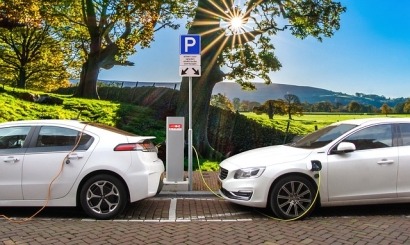
Southeast consumers currently spend approximately $103 billion on gasoline and diesel fuels in a single year. After paying for the imported and finished fuel products, only a little more than one-quarter of gas and diesel sales – approximately $28 billion – is estimated to be retained in the region.
This is primarily because the region has nearly no oil production, refining operations, or associated infrastructure. The $28 billion that is retained includes state taxes and fuel service provider revenues, but with electrification, we can retain even more.
The massive economic benefit of shifting to electric vehicles comes from two places:
Power plants generate electricity, and generation costs are the largest component of the retail price of electricity. Some generation costs, such as operations and maintenance, help keep dollars in-state because they rely on local labor and pay taxes on local land. Another part of paying for generation is fuel cost.
Coal, gas, and nuclear power plants use fuel to generate electricity, and most of those fuels are imported from out of state. This still represents an opportunity for the local economy – resources such as wind, solar, and energy efficiency do not require fuel to produce power, and many utilities have pledged to rapidly make the transition to renewables.
Two other major components of electricity infrastructure – transmission and distribution – are primarily localized to the state where the electricity is consumed and are assumed to contribute to money retained in-state. Distribution lines are maintained locally, and while electricity can travel across state lines via transmission lines, it does so infrequently and to neighboring states rather than traveling through multiple states or across the country like motor fuels do. For a more detailed breakdown of how these costs are treated, read the full report.
Multiple drivers have also historically kept electricity prices from the erratic swings we see in gas prices, thus making it more affordable to travel. One is that electric utilities ideally rely on more than a single type of fuel, and the commodity markets for those fuels have historically been less volatile than those for motor fuels. Utilities are also subject to a regulatory model where spending and pricing are overseen and regulated by state, local, or even federal entities, which has historically resulted in a slow (but sadly still steady) climb of retail prices when compared to gas and diesel prices.
The Southeast has much to gain by distancing itself from imported gas and diesel, and embracing locally-generated electricity to power transportation. Such an embrace will result in even more significant payback over time as the region ramps up utility-scale and distributed solar and wind generation, which do not require fuel to run, thus allowing even more dollars to be retained and invested in local economies.
We conduct analyses like this to inspire policymakers, utility regulators, and industry stakeholders to broaden their views of transportation electrification costs and benefits. Another reason is to stimulate further discussion and research. For example, ongoing research regarding EV jobs and investment show that Alabama, Georgia, Florida, North Carolina, South Carolina, and Tennessee represent approximately 18% of the nation’s population, yet make up an outsized portion of EV-related jobs and supply chain investments at 34% and 42% of the nation’s total respectively.
State policymakers and utility regulators need a full and clear picture of what is at stake. And they must act by ensuring effective policies and regulatory reforms to foster strong Southeast electric car, truck, and bus markets. Strong EV markets will pay major dividends by retaining billions of dollars in transportation fuel spending and supporting continued regional EV industry job growth and investment.
Authors: Heather Pohnan and Stan Cross

